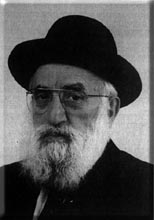Beit Midrash
- Sections
- Chemdat Yamim
- Bemare Habazak - Rabbis Questions
- Jewish Laws and Thoughts
- Prayer
- Davening in a Minyan
Answer: There is a consensus that Kaddish Titkabel (after U’va L’tziyon), including the line that Hashem accept our prayers, relates to chazarat hashatz. For example, the Shulchan Aruch (Orach Chayim 123:5) says that a chazan does not take three steps back after chazarat hashatz, as one does after the silent amida, because he will do so at Kaddish Titkabel (Mishna Berura 123:18). (For this reason, the chazan should not talk between the end of chazarat hashatz and Kaddish Titkabel (ibid.).) The Rama (OC 55:3) says, regarding the rule that when the minyan quorum is lost in the middle of a unit we finish up the unit, that this rule allows saying KaddishTitkabel if chazarat hashatz began with a minyan. Therefore, your shul’s dissenters have logic to posit that one who did chazarat hashatz should finish the Kaddish that completes it. On the other hand, it is possible to split units among people. If needed, the chazan can be switched even in the middle of chazarat hashatz without returning to the beginning (Shulchan Aruch, OC 126:2).
The question is whether a shul should ever choose to do this. An early source providing a scenario when this is called for is the Rama in the laws of aveilut (Yoreh Deah 364:4). In promoting the idea that an avel being chazan provides better virtue for the deceased than his reciting Kaddish, the Rama says that if an avel is not a fluent davener, he should be chazan for "Lamenatzei’ach and U’va L’tziyon." Poskim assume that he means that the new chazan will recite Kaddish Titkabel. The Bi’ur Halacha (siman 132 in Kuntras Ma’amar Kaddishin, which deals with questions of preference in being chazan/saying Kaddish) says that with two mourners with the same level of precedence, one davens until Ashrei, at which point a second mourner takes over. Thus, the central decisors of Ashkenazi tradition uphold the practice of switching chazanim when there are multiple mourners. While I have heard Ashkenazi poskim (including in the name of the Aderet) not being pleased with this practice, it is a long-held, broad Ashkenazi minhag as found in sources and as I have seen in many places. (As the percentage of mourners at minyanim decreases, mourners often find a minyan to be the exclusive chazan, and this accepted minhag is used more sparingly.)
The issue in your shul arose because of the knowledge and experience of the Sephardi members. The broad Sephardi minhag is to not switch chazanim and have the second one recite Kaddish Titkabel (see Yalkut Yosef, OC 123:9; Yaskil Avdi VIII:20). Yaskil Avdi posits that the Ashkenazi minhag is simply wrong and should be stopped. He is most concerned with the line of "Titkabel …," which relates to the chazan’s chazarat hashatz. Yalkut Yosef, while confirming the Sephardi minhag, says the Ashkenazi minhag is justifiable. First of all, the chazarat hashatz applies to the new chazan, as part of the tzibbur (and especially if he was attentive). The Asheknazi version of Titkabel is also more general than the Sephardi one. There are also opinions and indications that Titkabel applies to the silent Shemoneh Esrei, as it does at Ma’ariv, which has no chazarat hashatz.
Interestingly, Sephardim are consistent in their minhag in the following way. To them, an avel’s main obligation is to recite Kaddish, whereas many do not serve as chazan. Therefore, the need to "share the amud" is smaller. Note that the now almost universal minhag that all mourners recite Kaddish together started with Sephardim, who, again, stress Kaddish.
Several poskim rule that if a chazan will be replaced at Ashrei, he should take the three steps back at the end of chazarat hashatz (see sources in Ishei Yisrael 24:(158)). The same is true of reciting Yiheyu L’ratzon at the end of chazarat hashatz (Dirshu 123:25).

Bemare Habazak - Rabbis Questions (631)
Rabbi Daniel Mann
375 - Heating Pad on Shabbat
376 - Switching Chazanim at Ashrei
377 - Chanuka Candles Inside and Outside?
Load More

Ask the Rabbi: Collecting Money for a Specific Medical Cause
Rabbi Daniel Mann | Tevet 5786

Ask the Rabbi: Giving Away Offensively Left Materials
Rabbi Daniel Mann | Tevet 5786

Ask the Rabbi: Transporting Children before or after Shacharit?
Rabbi Daniel Mann | Kislev 5786

Ask the Rabbi: Electric Lights as Neirot Shabbat
Rabbi Daniel Mann | Tevet 5786

Rabbi Daniel Mann

Reciting Borei Nefashot on Food When One Will Still Drink
Sivan 3 5780

Cooking for Shabbat at the End of Yom Tov
Iyar 20 5783

Obtaining Arba’ah Minim for the Sukkot after Shemitta
Tisheri 7 5776




















